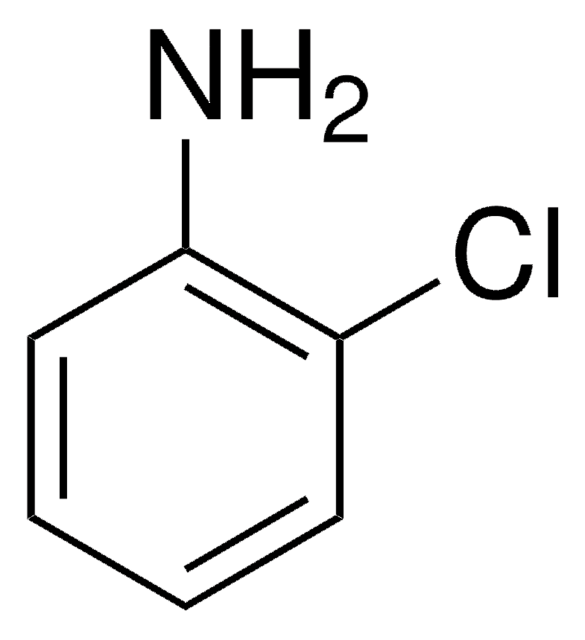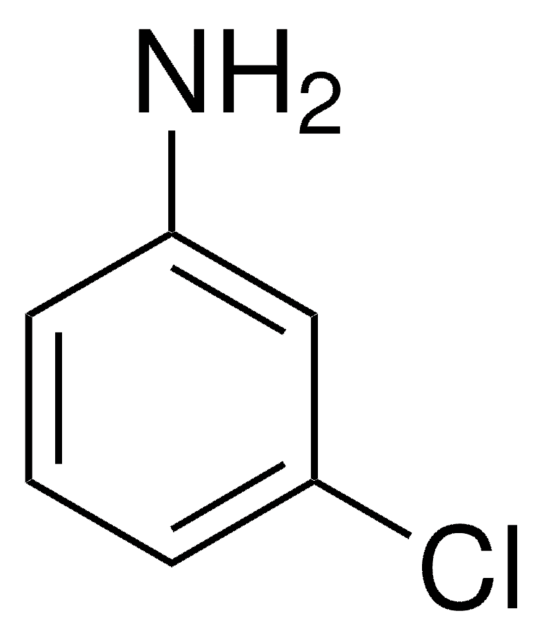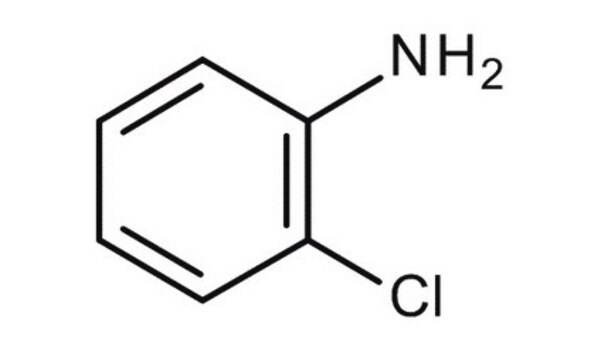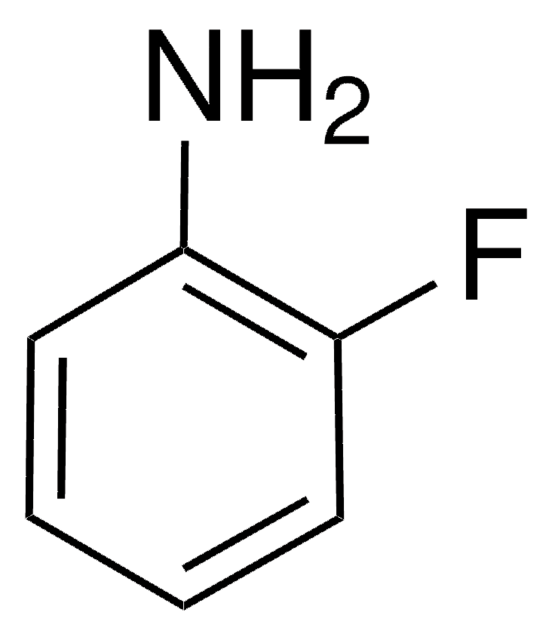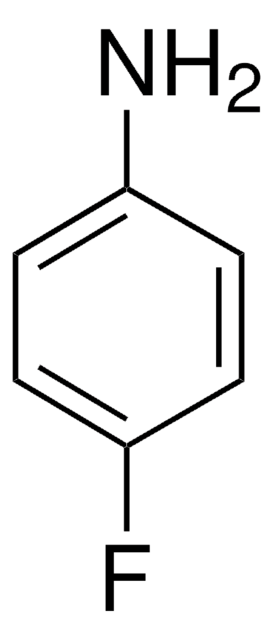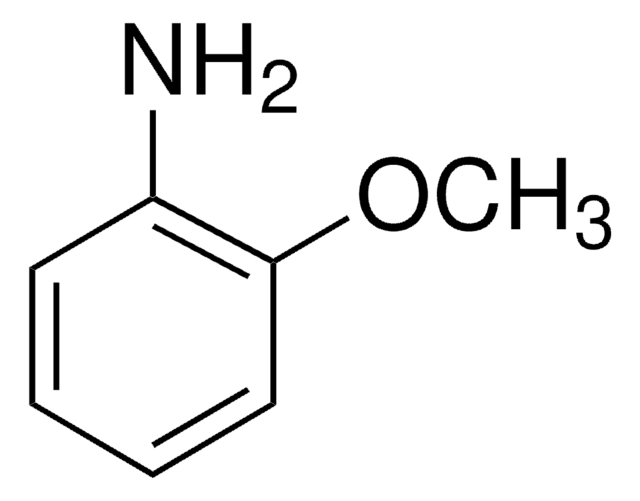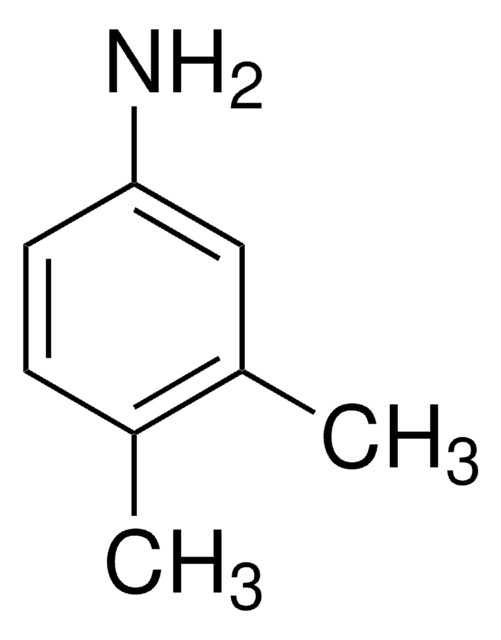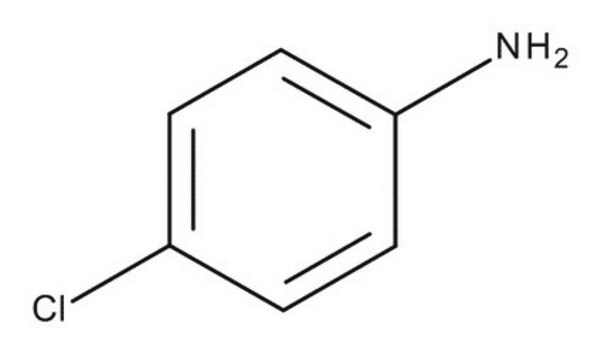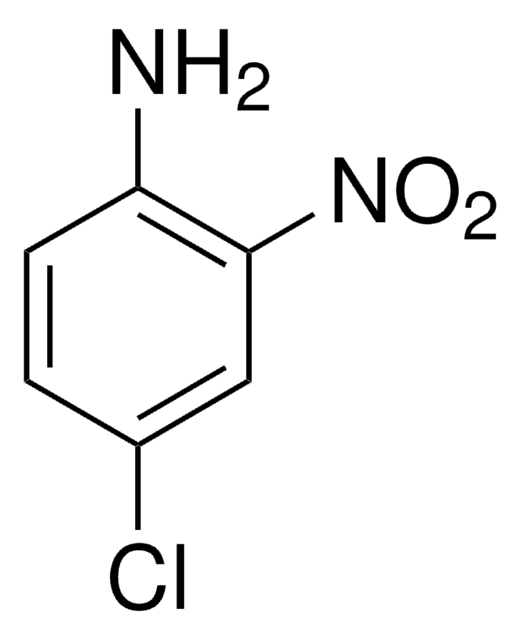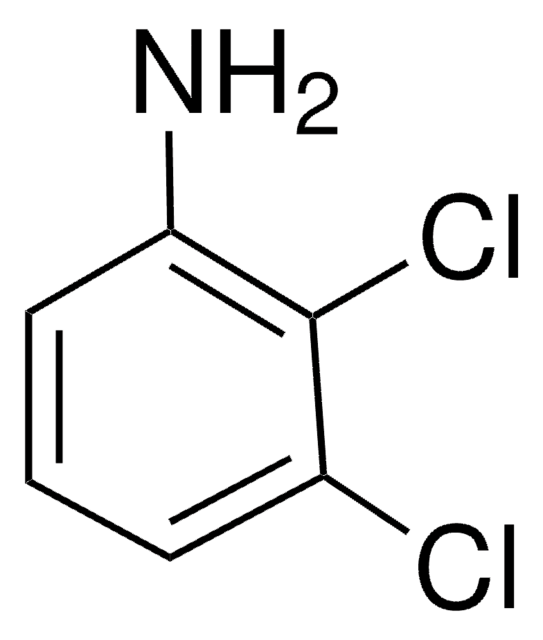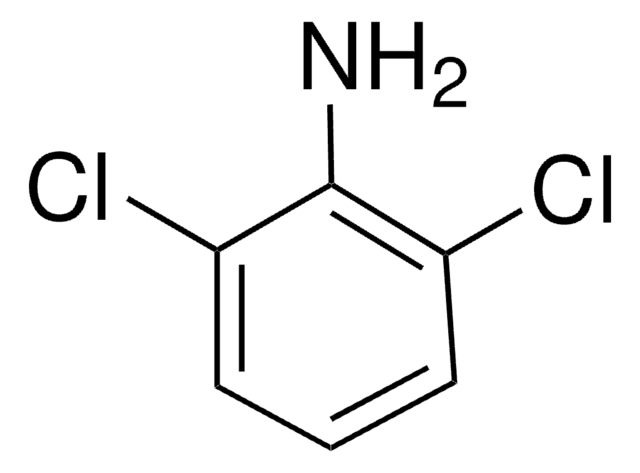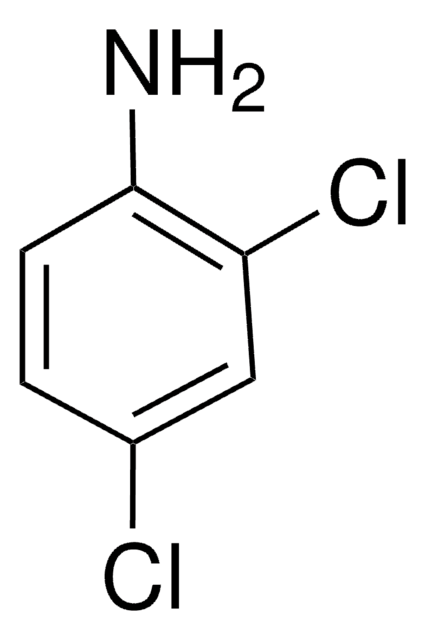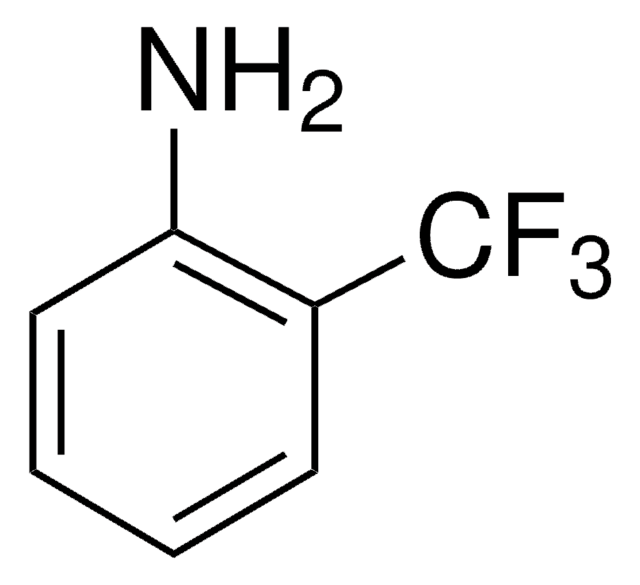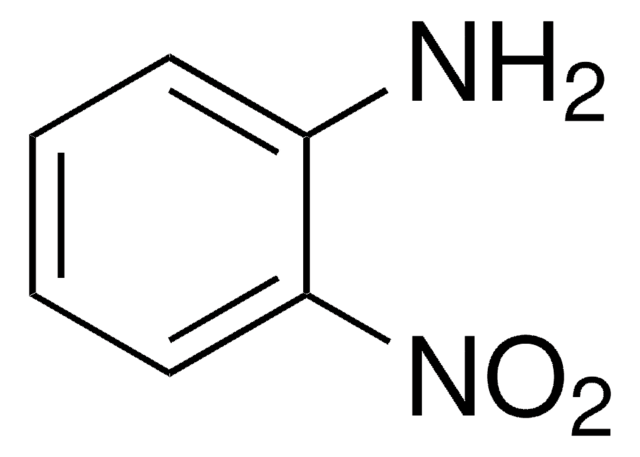23310
2-Chloroaniline
technical, ≥98.0% (GC)
About This Item
Productos recomendados
grade
technical
Quality Level
assay
≥98.0% (GC)
form
liquid
refractive index
n20/D 1.588
bp
208-210 °C (lit.)
solubility
water: soluble 5.13 g/L at 20 °C
density
1.213 g/mL at 25 °C (lit.)
SMILES string
Nc1ccccc1Cl
InChI
1S/C6H6ClN/c7-5-3-1-2-4-6(5)8/h1-4H,8H2
InChI key
AKCRQHGQIJBRMN-UHFFFAOYSA-N
¿Está buscando productos similares? Visita Guía de comparación de productos
General description
- 2-Chloroaniline is widely used in polymer, rubber, pharmaceutical and dye industries.
- Determination of 2-chloroaniline in polymer industrial wastewater has been examined using HPLC with on-line microdialysis.
- Degradation of 2-chloroaniline in water by ozonation as well as by photolysis (UV-light of 254 nm) and radiolysis (γ-rays) in the presence of ozone has been investigated.
signalword
Danger
Hazard Classifications
Acute Tox. 3 Dermal - Acute Tox. 3 Inhalation - Acute Tox. 3 Oral - Aquatic Acute 1 - Aquatic Chronic 1 - Eye Irrit. 2 - Muta. 2 - STOT RE 2
Storage Class
6.1A - Combustible, acute toxic Cat. 1 and 2 / very toxic hazardous materials
wgk_germany
WGK 3
flash_point_f
221.0 °F - closed cup
flash_point_c
105 °C - closed cup
Elija entre una de las versiones más recientes:
¿Ya tiene este producto?
Encuentre la documentación para los productos que ha comprado recientemente en la Biblioteca de documentos.
Los clientes también vieron
Protocolos
GC Analysis of Anilines on Equity®-5
Nuestro equipo de científicos tiene experiencia en todas las áreas de investigación: Ciencias de la vida, Ciencia de los materiales, Síntesis química, Cromatografía, Analítica y muchas otras.
Póngase en contacto con el Servicio técnico